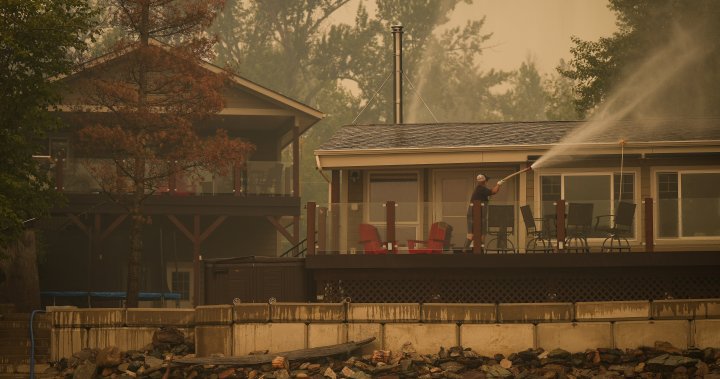Officials are warning Canadians that the risk of wildfires remains significant as the wildfire season begins across the country, with 730 fires having already burned 1.47 million hectares of land so far this year. In an effort to protect their homes from the devastating effects of wildfires, experts recommend several steps that homeowners can take well ahead of a wildfire approaching their region. Blair Feltmate, from the University of Waterloo’s Intact Centre for Climate Adaptation, emphasizes that the actions taken beforehand are crucial in determining whether a home will survive a wildfire. The Intact Centre provides a three-step guide for homeowners to follow, including maintaining the property, making simple upgrades to the home, and making more complex upgrades. These steps, which range in costs from less than $300 to up to $30,000, can significantly reduce the risks posed by wildfires.
The first step in protecting one’s home from wildfires includes maintaining the property in a fire-ready manner by removing debris from gutters, roof surfaces, decks, and balconies. It also involves clearing combustible ground cover like shrubs near the house and storing firewood and lumber away from the residence. The second step involves making simple upgrades to the home, such as replacing weather stripping, adding screens to vents, and installing non-combustible materials around the house. The aim is to have most exterior walls using fire-resistant materials and creating a barrier to stop the spread of fire. The third step, which may involve working with a contractor, entails making more complex upgrades such as installing fire-resistant roofing and siding materials, as well as windows and doors that are resistant to fire. While these steps may require an investment, they are essential in protecting one’s home from the potential devastation of wildfires.
The wildfire forecast for May indicates high or extreme fire severity in Saskatchewan and Alberta, with above-normal fire activity expected in other areas such as eastern B.C., central/northern Prairies, southern Northwest Territories, eastern Ontario, and western Quebec. In June, the monitoring area expands to Northwest Territories, Yukon, and B.C., with western Canada remaining a hotspot for wildfires. Wildfires can result in significant damage, with last year’s wildfires in B.C. costing over $720 million. The Insurance Bureau of Canada advises Canadians to review their insurance policies to ensure coverage for damage caused by wildfires. Standard home and tenant insurance policies typically cover damage caused by wildfires, including damage to the home, contents, outbuildings, and additional living expenses. Taking steps to protect one’s home from wildfires can also help in reducing insurance premiums over the long term, as multiple claims can lead to increases in premiums.
Experts emphasize the importance of preparing homes for potential wildfires, especially as climate change impacts increase the frequency and severity of wildfires across the country. By taking proactive measures to make homes more resilient to wildfires, homeowners can mitigate risks and potentially save money in the long run by reducing the likelihood of insurance claims. While there is no guarantee that a home will be spared in the event of a wildfire, implementing the recommended steps can significantly improve the chances of survival. As wildfire season progresses, it is essential for Canadians to be aware of the risks and take proactive measures to protect their homes and families from the devastating effects of wildfires. By following the guidance provided by experts and government agencies, homeowners can be better prepared to face the challenges posed by wildfires and minimize the potential impact on their communities.


